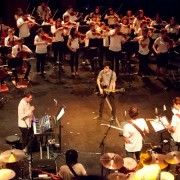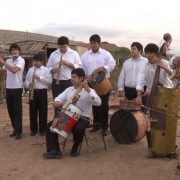Nick Zinner (of the Yeah Yeah Yeahs) is a musician who ceaselessly surprises us with his versatility. He blew us away when he led an orchestral ensemble of 41 strings in an originally composed performance celebrating the 41st anniversary of Earth Day. Organic clothing company Loomstate put on the event, where Zinner conducted and played with an impressive lineup of violins, violas, cellos, electric and acoustic guitars, upright bass, electric bass (and some drums and synths thrown in for good measure). “Writing this piece has been different than anything I’ve ever done,” Zinner says in the behind-the scenes-video (above), “I just want to make something that’s good and has some sort of emotional resonance, something that’s easy to connect with.” (source).
[easy-share buttons=”facebook,twitter,linkedin,mail” counters=0 native=”no” image=https://live-ehc-english-ucsb-edu-v01.pantheonsite.io/wp-content/uploads/2014/11/yusuke-asai-waf-1.jpg url=https://live-ehc-english-ucsb-edu-v01.pantheonsite.io/?p=7382 facebook_text=Share twitter_text=Tweet linkedin_text=Link text=”Nick Zinner’s 41 Strings”]



